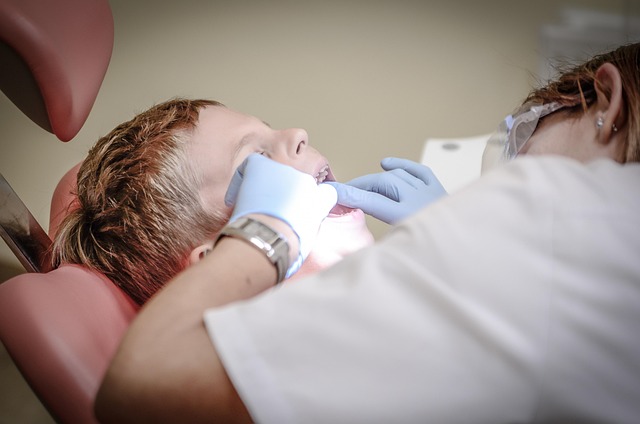Professional Liability insurance is a crucial safety net for small businesses, protecting against financial losses and legal liabilities due to professional negligence. By assessing risks, reviewing policies, implementing best practices, and staying compliant with regulations, businesses can mitigate Professional Liability concerns, safeguard operations, and maintain customer trust.
In today’s dynamic business landscape, understanding professional liability is crucial for small businesses aiming to thrive. This comprehensive guide delves into the essentials of professional liability insurance, exploring common risks, key coverage elements, and effective risk management strategies. Learn how to assess potential liabilities, handle claims, navigate legal obligations, and build a robust risk framework to safeguard your business against unforeseen challenges. Discover real-world case studies and industry insights that emphasize the importance of proactive risk mitigation.
Understanding Professional Liability Basics

Professional Liability, also known as errors and omissions (E&O) insurance, is a crucial safety net for small businesses. It protects against claims arising from professional negligence, such as mistakes in advice, services, or products provided to clients. This coverage is essential as it can shield businesses from significant financial losses and legal liabilities, which could otherwise cripple their operations.
At its core, Professional Liability insurance compensates for legal fees and damages awarded to clients who suffer losses due to the business’s negligence. It’s not just about financial protection; it also fosters trust between businesses and their clients by demonstrating a commitment to accountability and excellence in service delivery.
Common Risks Facing Small Businesses

Small businesses, despite their agility and innovativeness, face a multitude of risks that can expose them to significant liability. One of the most pressing areas is Professional Liability, which arises from errors or omissions in services provided to clients. For instance, misadvising a client on a financial strategy or failing to accurately complete a project can lead to legal issues and financial losses for both the business and the client.
Another common risk is damage to property or injury to individuals on or near the business premises. This includes accidents involving customers, employees, or vendors, as well as incidents related to the operations themselves. Effective risk management strategies, including proper insurance coverage and regular safety audits, are crucial for small businesses to mitigate these Professional Liability concerns.
Key Elements of Professional Liability Insurance

Professional Liability insurance, often referred to as errors and omissions (E&O) coverage, is a crucial shield for small businesses. It protects against claims arising from professional negligence, including mistakes, oversights, or failures to provide promised services. The key elements of this coverage include the policy limits, which determine the maximum amount the insurer will pay out in the event of a claim. Broad coverage should be sought to encompass various service areas and potential risks specific to your business.
Additionally, the policy’s terms and conditions are vital. These dictate what is considered covered and excluded. Look for policies that explicitly cover common liability triggers like faulty advice, incomplete work, or missed deadlines. Exclusions, such as intentional acts or pre-existing conditions, should be clearly understood to avoid unexpected gaps in protection. Understanding these components ensures your small business is adequately protected against the financial consequences of professional errors or omissions.
How to Assess Potential Liabilities

Assessing potential liabilities is a crucial step for small businesses looking to mitigate their risks and protect against professional liability claims. It involves a thorough examination of your operations, services, and interactions with clients or customers. Start by identifying all aspects of your business that could potentially expose you to legal responsibility. This includes the products or services you offer, any contractual agreements, and the ways in which you handle client data or payments.
Regularly review past incidents, complaints, or disputes to identify recurring issues or patterns that might signal emerging liability concerns. Consult with industry experts, lawyers specializing in professional liability, or industry associations for guidance on common risks specific to your sector. Staying proactive in this area allows small businesses to implement preventive measures, update policies and procedures as needed, and foster a culture of accountability, all of which contribute to minimizing the likelihood and impact of future claims.
Strategies for Risk Mitigation and Prevention

Small businesses can proactively manage professional liability risks through comprehensive risk mitigation and prevention strategies. Regularly reviewing and updating business practices, policies, and procedures is essential to anticipate potential issues. Implementing robust internal controls, such as meticulous record-keeping, detailed documentation of processes, and employee training on compliance matters, can significantly reduce exposure to professional liability claims.
Additionally, staying informed about industry regulations, best practices, and emerging trends helps businesses navigate legal requirements and mitigate risks effectively. Obtaining adequate insurance coverage tailored to specific business activities is another crucial step in risk management. By combining these proactive measures, small businesses can fortify their defenses against professional liability issues, fostering a more secure operational environment.
Claims Handling and Management Best Practices

Small businesses, while bustling with potential, are not immune to claims that can arise from professional liability issues. Effective claims handling and management are essential practices for navigating these challenges. Promptly acknowledging and investigating claims, gathering relevant information, and documenting the process are key steps in managing risks associated with professional liability.
Business owners should establish clear protocols for communicating with claimants, retaining legal counsel if necessary, and negotiating settlements or defending against claims in court. Regular training on best practices and staying updated on relevant laws can empower small business owners to effectively handle these situations, thereby mitigating potential losses and maintaining their professional reputation in the face of adversity.
Case Studies: Real-World Liability Scenarios

Small businesses, despite their size, aren’t immune to professional liability claims. Let’s look at some real-world examples to understand this better. For instance, a local bakery in a bustling metropolis was found negligent after a customer developed an allergic reaction to a product due to inadequate labeling. The customer sued the bakery for failure to ensure product safety, highlighting the importance of accurate ingredient listings and allergen warnings.
Another case involves a tech startup that launched a new software with a critical bug, causing significant financial losses to its clients. The startup faced numerous lawsuits for breach of contract and negligence, underscoring the need for rigorous testing and quality assurance processes. These scenarios emphasize that professional liability is a year-round concern for small businesses, necessitating proactive measures to mitigate risks and protect their assets.
Legal Obligations and Industry Regulations

Small businesses, despite their size, are not immune to legal obligations and industry regulations that carry significant weight in the realm of professional liability. These duties stem from contracts, client agreements, and often, specific laws governing their sector. For instance, a graphic design studio must adhere to data privacy standards when handling client information, while a catering company is responsible for ensuring food safety. Failure to meet these obligations can result in legal repercussions, including lawsuits and financial penalties.
Understanding and staying current with relevant regulations are essential steps in managing professional liability. Businesses should implement internal policies, conduct staff training, and consult experts when necessary to ensure compliance. Regular reviews of industry standards and best practices allow small businesses to navigate the complex landscape of legal obligations, thereby safeguarding their operations from potential risks associated with professional liability.
Building a Robust Risk Management Framework

Building a robust risk management framework is essential for small businesses aiming to mitigate their professional liability. This involves proactively identifying, assessing, and addressing potential risks associated with operations, products, and services. Implementing policies, procedures, and training programs tailored to specific business activities can significantly reduce exposure to professional liability claims.
Regular audits and reviews of these measures are crucial to ensure their effectiveness and adaptability to evolving legal landscapes and industry standards. By cultivating a culture of risk awareness and accountability, small businesses can foster an environment that not only minimizes the chances of professional liability but also enhances overall operational efficiency and customer satisfaction.
